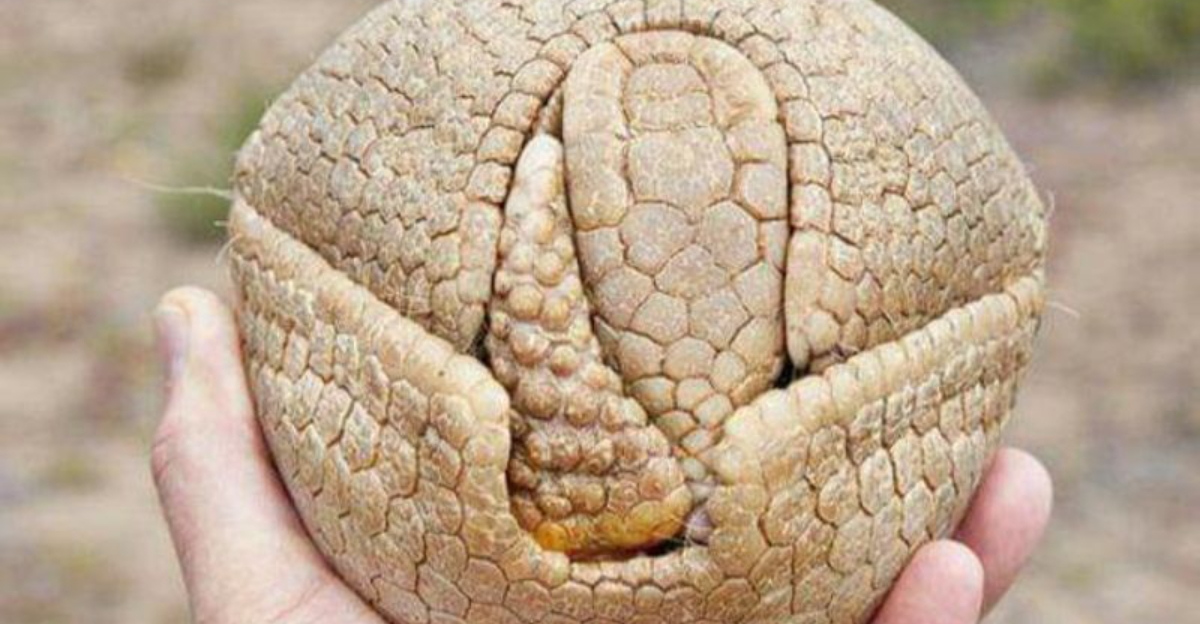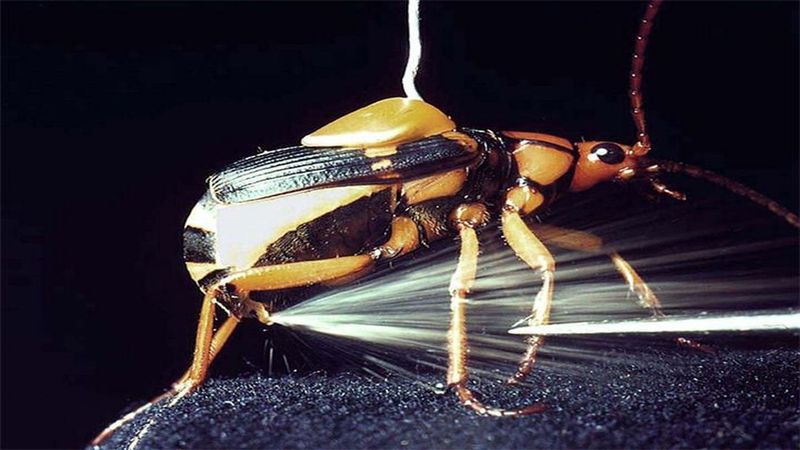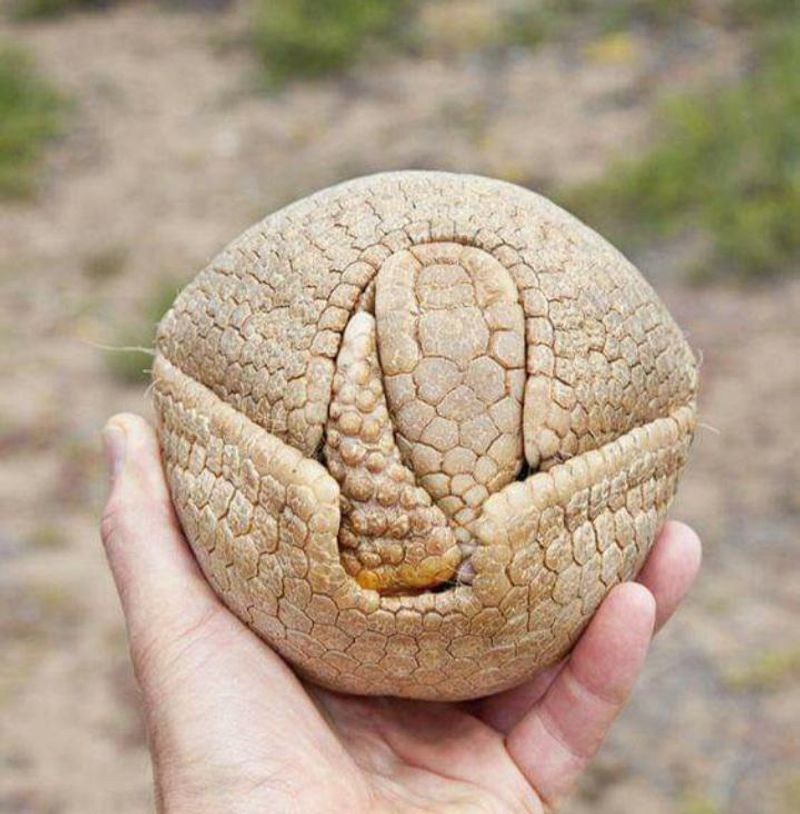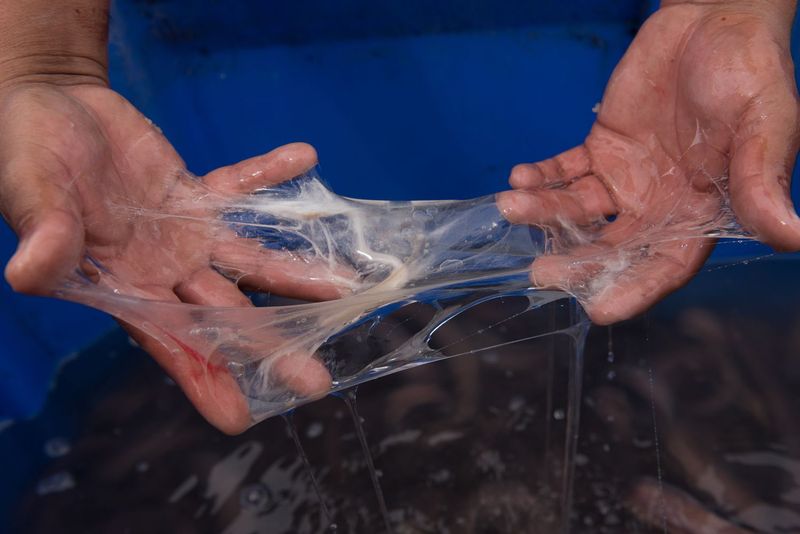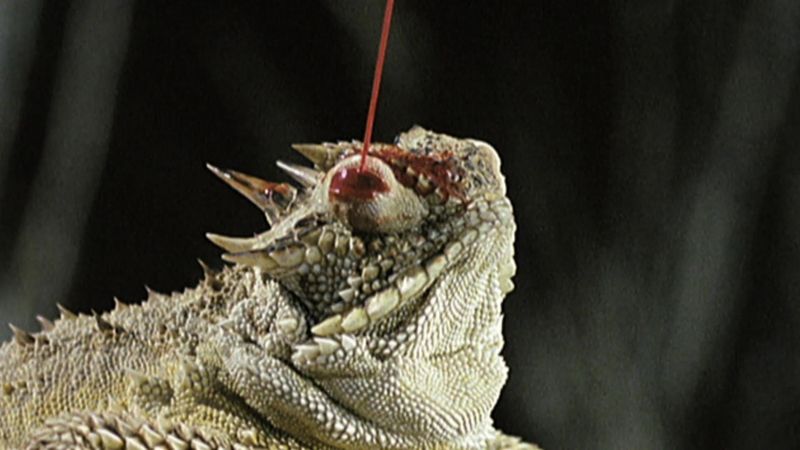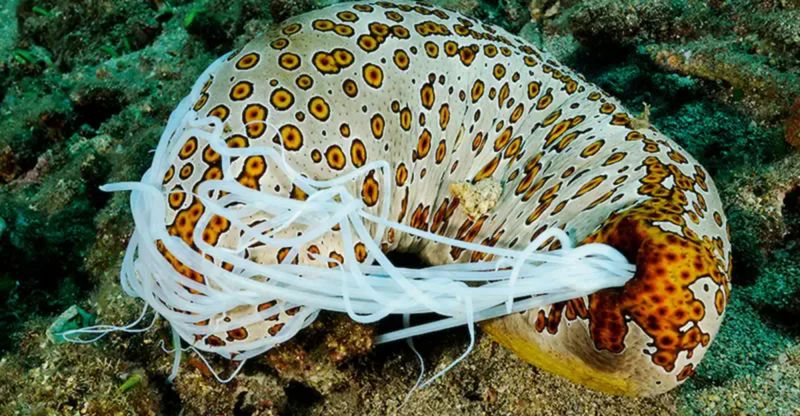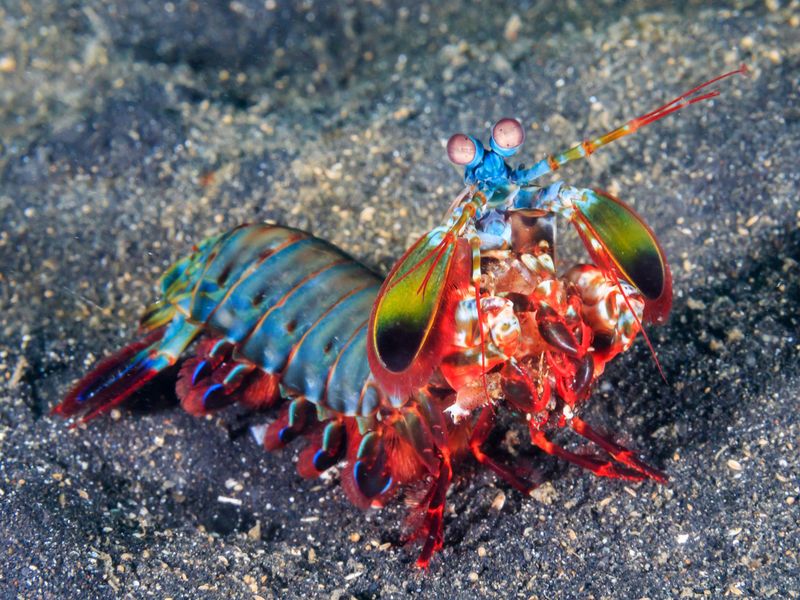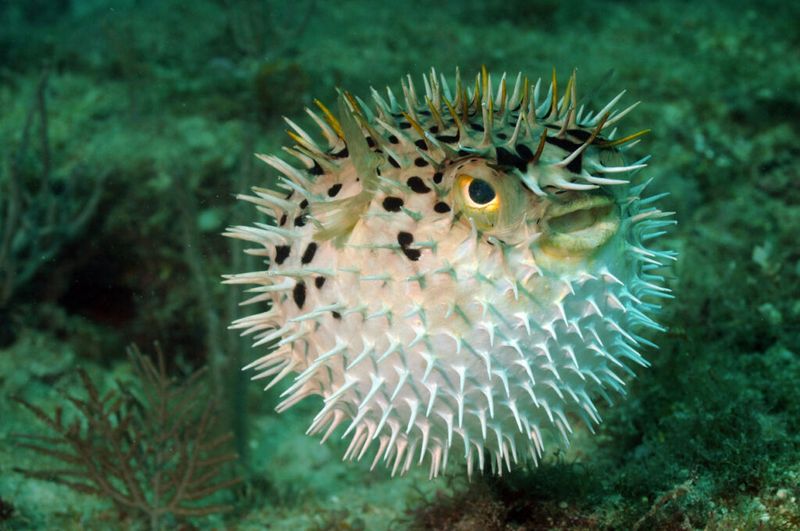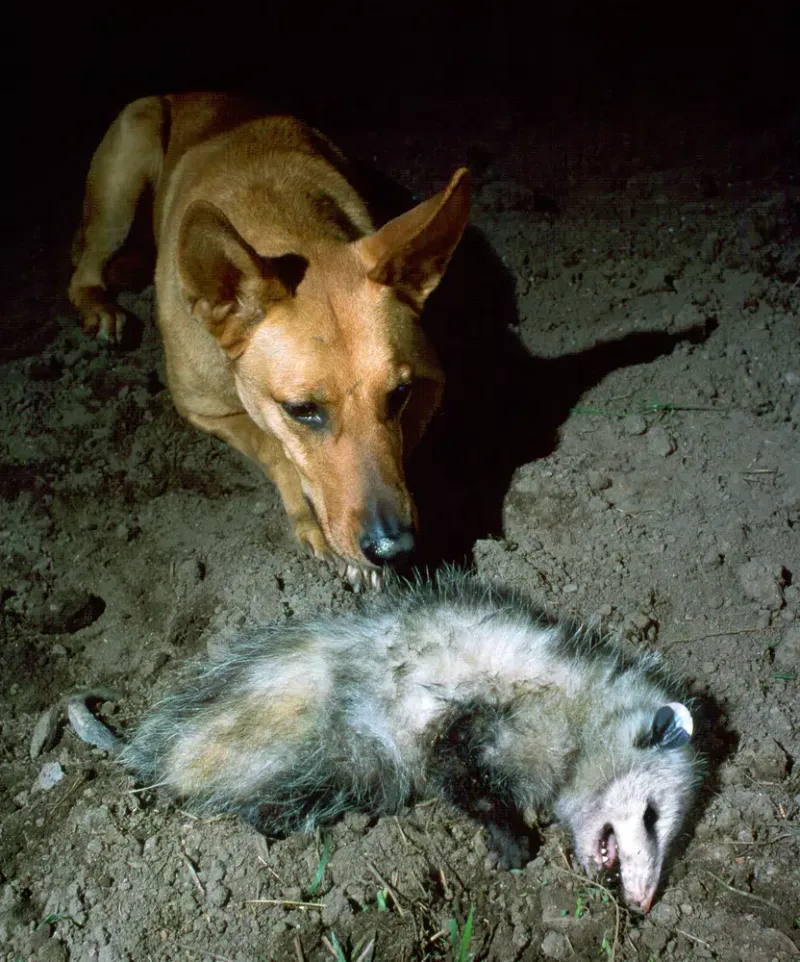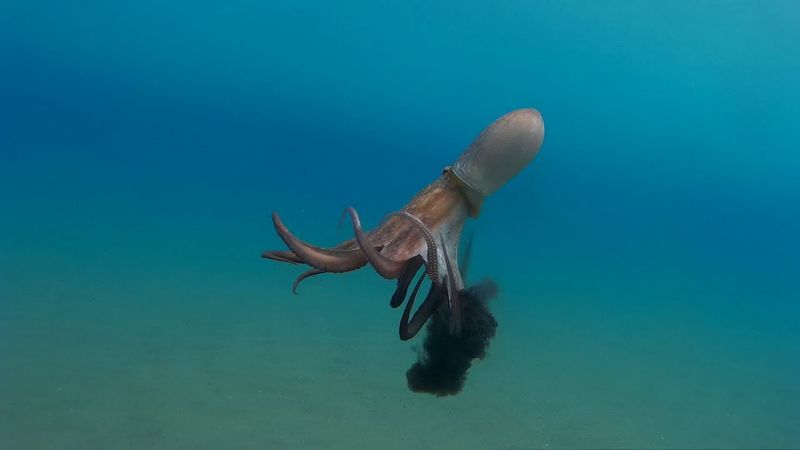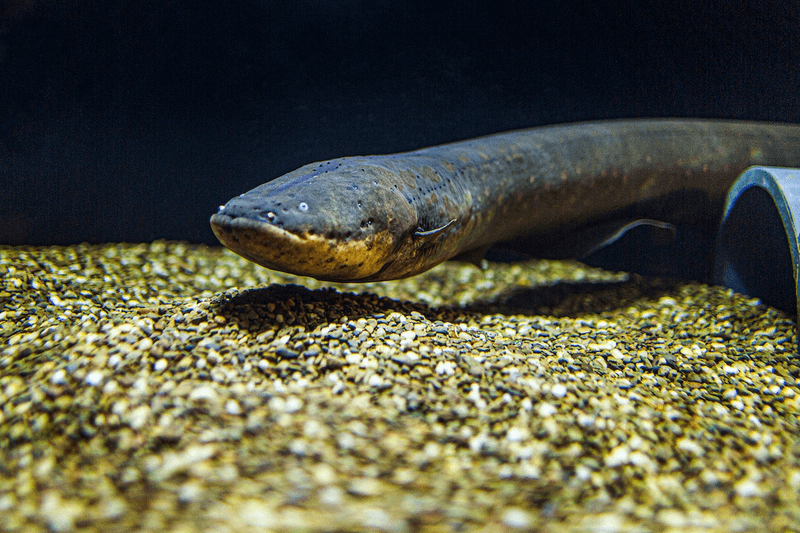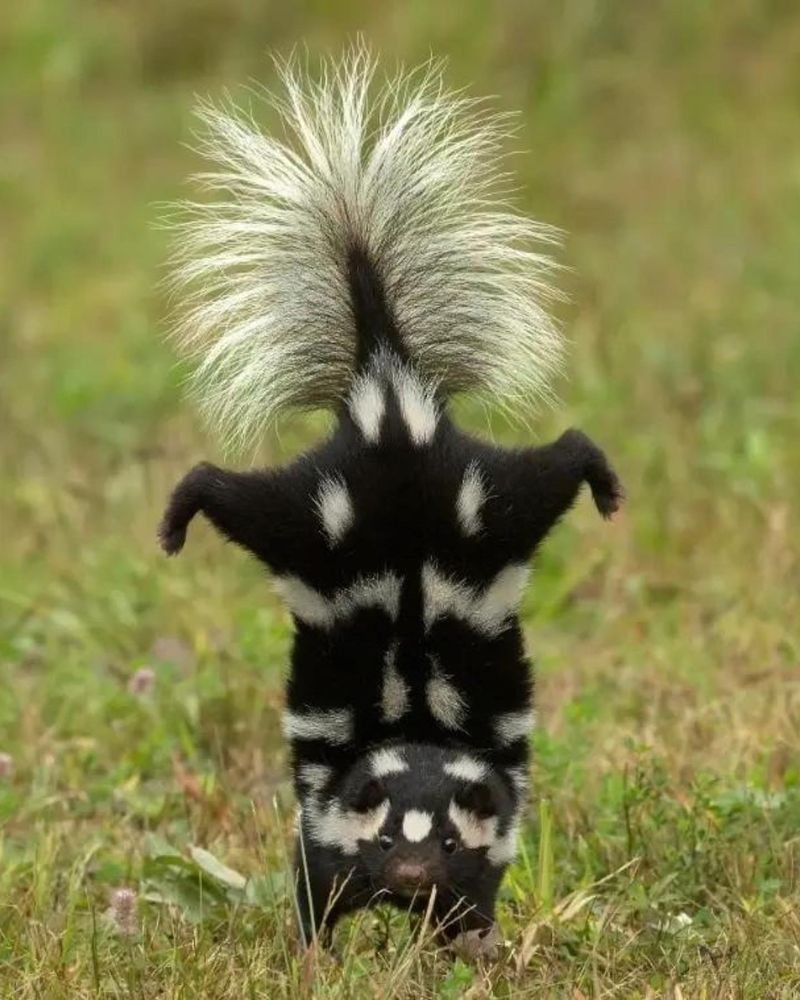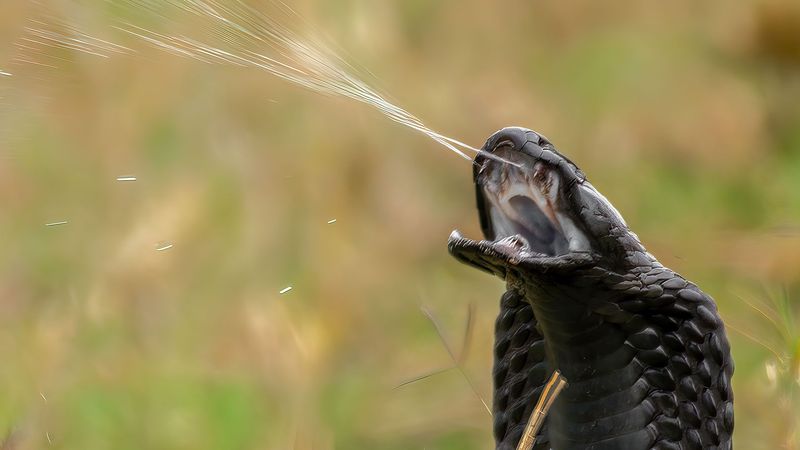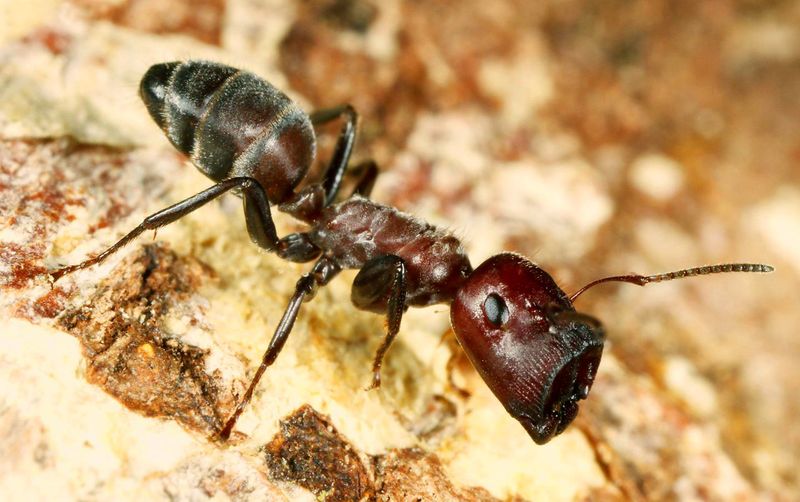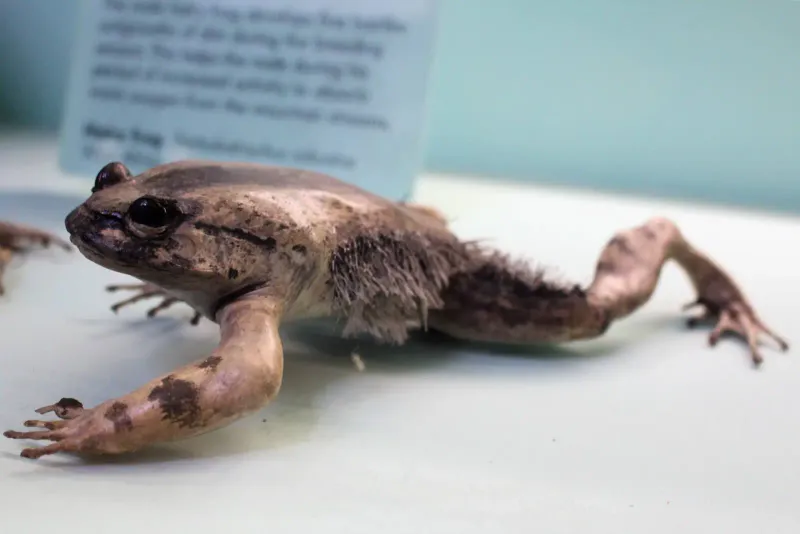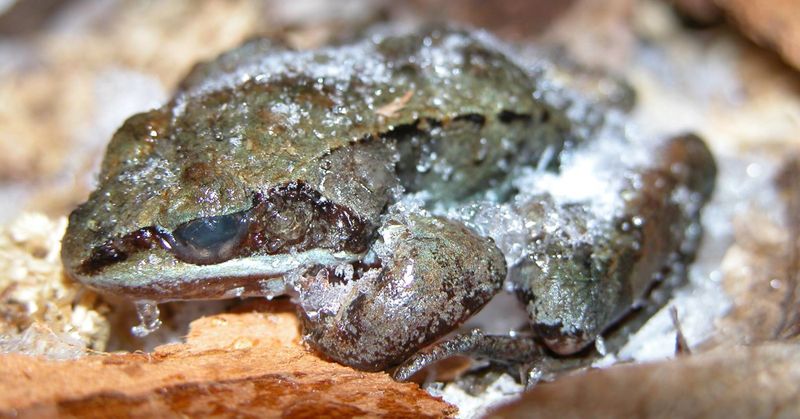Nature is a battlefield where survival depends on having the right defenses. Throughout millions of years of evolution, animals have developed some truly extraordinary ways to protect themselves from predators. From chemical warfare to self-destruction, these defense mechanisms showcase nature’s incredible ingenuity and the lengths creatures will go to stay alive. Get ready to discover some of the most jaw-dropping defensive adaptations in the animal kingdom!
Bombardier Beetle’s Chemical Explosion
Imagine having a built-in chemical weapon that creates a boiling hot explosion! The bombardier beetle mixes two chemicals stored in separate chambers inside its body when threatened. When these substances combine, they create a violent reaction reaching temperatures of 212°F (100°C). The resulting spray shoots from the beetle’s rear end with an audible pop, often directly into the face of would-be predators. This hot, noxious chemical cocktail causes burning sensations and temporary blindness, giving the beetle plenty of time to escape. What makes this defense system even more remarkable is the beetle’s ability to aim with surprising accuracy, rotating its abdomen in different directions to target threats. Despite being only about half an inch long, this insect packs a defensive punch that rivals military-grade pepper spray. Scientists are even studying this mechanism to develop new technologies inspired by the beetle’s chemical engineering.
Armadillo’s Living Armor
Roll into danger? That’s exactly what armadillos do! These remarkable mammals sport a natural suit of armor made of bony plates covered by tough, leathery skin. When predators approach, three-banded armadillos perform their signature move – curling into a perfect ball that shields all vulnerable parts. This defensive position transforms the animal into a hard, round shell with no soft spots for predators to target. Even determined predators like coyotes and large cats often give up after trying to penetrate this living fortress. The armadillo’s armor consists of ossified dermal plates connected by flexible skin, allowing for both protection and mobility. Surprisingly lightweight for its protective capacity, this armor doesn’t significantly slow the animal down when running. Some armadillo species can even walk underwater across stream beds by holding their breath for up to six minutes – carrying their armor protection into aquatic environments where many predators can’t follow.
Hagfish Slime Factory
Meet the ocean’s slimiest escape artist! When a hagfish feels threatened, it releases a small amount of mucus that expands dramatically upon contact with seawater. Within seconds, this unassuming fish can produce enough slime to fill a bucket – up to 5 gallons from just a few drops of concentrated goo. The resulting cloud of slime clogs the gills of predatory fish, causing them to retreat or risk suffocation. Remarkably, this slime contains thousands of silk-like protein threads that are stronger than nylon, making it both sticky and surprisingly strong. A single hagfish can tie itself in a knot to wipe off excess slime from its own body after the danger passes. Scientists are fascinated by hagfish slime’s potential applications in creating sustainable fabrics and materials. This prehistoric-looking creature has survived relatively unchanged for over 300 million years, proving that sometimes the slimiest solution is also the most effective defense strategy in nature.
Horned Lizard’s Blood-Squirting Eyes
Blood shooting from your eyes sounds like something from a horror movie, but for the horned lizard, it’s a lifesaving defense mechanism! When cornered by predators like cats, dogs, or coyotes, this remarkable reptile increases blood pressure in vessels around its eyes until they rupture, spraying blood up to five feet away. The blood contains chemicals that taste foul to canine and feline predators, making them back off immediately. Found primarily in the deserts of North America, these flat-bodied lizards can control this defense with surprising precision, aiming specifically at the predator’s mouth and eyes. The blood-squirting defense is typically used as a last resort after other tactics like camouflage and puffing up have failed. Amazingly, the lizard suffers no permanent damage from this dramatic defense and can repeat it multiple times if necessary. While disgusting to predators, this blood-squirting ability has made the horned lizard a fascinating subject for both scientific research and folklore in its native regions.
Sea Cucumber’s Self-Evisceration
Imagine throwing your internal organs at an attacker – that’s exactly what sea cucumbers do! When threatened, these marine animals perform one of nature’s most dramatic defense moves by forcefully expelling their intestines, respiratory trees, and other organs through their rear end or a body wall rupture. The expelled organs are sticky and often toxic, entangling predators or releasing chemicals that drive them away. Even more remarkably, sea cucumbers can regenerate their entire digestive system and other expelled organs within a few weeks. Some species take this defense further by producing a potent toxin called holothurin that can kill small fish. Found across ocean floors worldwide, these seemingly simple creatures have perfected this extraordinary self-sacrifice strategy over millions of years. Scientists study sea cucumber regeneration abilities for insights into tissue regeneration and potential medical applications. While appearing vulnerable and slow-moving, these echinoderms demonstrate that sometimes the best defense involves temporarily sacrificing parts of yourself to survive.
Peacock Mantis Shrimp’s Supersonic Punch
The peacock mantis shrimp packs the most powerful punch in the animal kingdom! Despite being only about 6 inches long, this colorful marine crustacean delivers strikes so fast they create cavitation bubbles that collapse with enough force to stun prey – even when the punch itself misses. These specialized appendages accelerate with the same force as a .22 caliber bullet. Moving at up to 50 mph, their strikes are so powerful they can break aquarium glass and smash through crab shells like they’re made of paper. The force generated creates a flash of light (sonoluminescence) and temperatures nearly as hot as the sun’s surface for a fraction of a second. Researchers have studied this mechanism to develop stronger materials for body armor and vehicles. With the most complex eyes in the animal kingdom (able to see polarized light and more color receptors than humans), these little fighters can precisely target their devastating blows. Their striking appendages have inspired everything from cancer-detection cameras to stronger composite materials used in aerospace engineering.
Pufferfish’s Spiky Transformation
From ordinary fish to spiky balloon in seconds! The pufferfish performs one of the ocean’s most dramatic defensive transformations. When threatened, this fish rapidly gulps water or air, expanding its highly elastic stomach to triple its normal size while simultaneously extending dozens of sharp spines that normally lie flat against its body. The sudden change makes the pufferfish nearly impossible to swallow and intimidating to approach. Many species add another layer of defense by containing tetrodotoxin, a poison up to 1,200 times more deadly than cyanide. Just one pufferfish contains enough toxin to kill up to 30 adult humans, with no known antidote. Despite this fearsome defense, these fish are slow swimmers and would be easy prey without their inflation ability. After danger passes, the pufferfish expels the water or air and returns to its normal size. Curiously, some pufferfish species create elaborate circular patterns on the ocean floor during mating season – artistic talent combined with deadly defense makes these fish truly unique ocean dwellers.
Opossum’s Death-Feigning Act
Academy Award-worthy performances happen daily in the animal kingdom! When an opossum feels threatened, it doesn’t just play dead – it puts on a complete physiological show. The animal falls to its side, becomes stiff, bares its teeth, foams at the mouth, and even emits a foul-smelling green substance from its anal glands. During this remarkable trance-like state, the opossum’s breathing and heart rate slow dramatically, and it can remain “dead” for up to four hours. This involuntary response evolved because most predators avoid eating carrion or dead animals. Young opossums develop this ability at about two months old, with some individuals becoming so convincing they appear completely lifeless even when picked up and handled. North America’s only marsupial uses this theatrical defense as a last resort after hissing, growling and showing its 50 teeth fail to scare off threats. The phrase “playing possum” has entered our language as a testament to how effective this deceptive strategy proves in the wild, fooling predators and humans alike.
Octopus Ink Cloud Escape
Masters of aquatic deception, octopuses deploy a multi-purpose ink defense that would make any spy jealous! When threatened, these intelligent cephalopods release a cloud of dark melanin-rich ink from a specialized sac, creating an underwater smoke screen that confuses predators and blocks their sense of smell. More impressively, some species can shape this ink into a “pseudomorph” – a dark blob roughly the same size and shape as the octopus itself – creating a decoy that predators attack while the real octopus jets away. The ink contains tyrosinase, which temporarily blinds and paralyzes the predator’s sense of smell and taste. Scientists have discovered the ink also contains dopamine and other compounds that may have antimicrobial properties. Octopuses use this defense sparingly since producing ink requires significant energy. Each species produces slightly different ink compositions, with some creating reddish or even luminescent varieties. This sophisticated chemical warfare, combined with their color-changing camouflage and problem-solving intelligence, makes octopuses some of nature’s most effective escape artists.
Electric Eel’s High-Voltage Shield
Walking batteries with fins! Electric eels generate enough electricity to power ten light bulbs simultaneously. Despite their name, these South American fish aren’t true eels but belong to the knifefish family, possessing specialized cells called electrocytes that function like tiny batteries connected in series. When threatened, electric eels can discharge up to 600 volts – five times the voltage of a standard wall outlet – causing painful muscle contractions in predators or potential threats. The shock isn’t just defensive; these clever creatures use lower-voltage pulses to navigate murky waters and locate prey, essentially using electricity as a sixth sense. Recent research discovered they can even leap partially out of water to deliver direct shocks to threats above the surface. Young electric eels travel in groups for protection, collectively creating even more powerful electrical fields. Despite their impressive electrical capabilities, these fish must surface regularly to breathe air. Scientists study electric eels to develop better batteries and power sources, turning this ancient defense mechanism into inspiration for modern technology.
Skunk’s Unforgettable Spray
Nature’s most notorious perfumers, skunks carry a defensive weapon so potent it’s effective from 10 feet away! These black and white mammals produce a yellowish, oily liquid in specialized anal glands that contains sulfur compounds called thiols – the same chemical family responsible for the smell of rotten eggs, but much more concentrated. Before spraying, skunks give fair warning through a series of threat displays: stamping front feet, raising their tail, and even performing handstands. If these warnings go unheeded, they can aim with remarkable precision, hitting targets up to 10 feet away with enough accuracy to spray directly into a predator’s eyes. The liquid causes intense burning sensations and temporary blindness while leaving an odor that can linger for weeks. Remarkably, skunks produce only about a tablespoon of this potent substance at a time and need up to 10 days to replenish their supply after spraying. Most predators learn quickly to avoid these distinctively patterned animals, with great horned owls being among the few creatures that regularly hunt skunks, as they have a poor sense of smell.
African Spitting Cobra’s Venomous Accuracy
Snakes that spit? African spitting cobras have evolved the reptile equivalent of a chemical water gun! These remarkable snakes can accurately project venom from specialized fangs up to 8 feet away, typically aiming for the eyes of potential threats. Unlike regular cobras that must bite to deliver venom, spitting cobras have modified fangs with forward-facing openings. When threatened, these snakes contract special muscles around their venom glands while simultaneously forcing air through their windpipe, creating enough pressure to spray venom in a fine mist. High-speed photography reveals they can track moving targets and adjust their aim with remarkable precision. The venom causes intense pain and potential blindness if it reaches the eyes, though it rarely proves fatal unless entering the bloodstream. Before spitting, these cobras display the iconic hood and raise the front portion of their bodies – warning signs to back away immediately. Scientists study their accuracy and venom delivery system to develop better spray mechanisms for medications and self-defense products, turning this frightening ability into beneficial human applications.
Malaysian Exploding Ant’s Self-Sacrifice
The ultimate act of self-sacrifice! Malaysian exploding ants take colony defense to an extreme level by literally blowing themselves up to protect their nest. When threatened, specialized worker ants called “minor workers” contract their abdominal muscles so violently that their bodies rupture, spraying nearby enemies with a sticky, toxic yellow substance. This remarkable defensive substance contains corrosive chemicals that can immobilize or kill predators several times larger than the ant. The toxic goo hardens quickly, effectively gluing predators in place while simultaneously burning their exoskeletons. Scientists only recently described this species formally in 2018, though reports of “exploding ants” have fascinated entomologists for decades. The colony produces these specialized kamikaze defenders specifically for this purpose – they’re walking bombs designed to die for the greater good. This extreme form of altruistic defense, called autothysis, appears in only a few insect species worldwide. The explosion is so powerful that the sound can sometimes be heard by human ears, making these tiny defenders as audibly impressive as they are chemically formidable.
Hairy Frog’s Bone Claws
Wolverine has nothing on the hairy frog! This Central African amphibian, also called the “horror frog,” breaks its own toe bones and pushes them through its skin to create sharp claws when threatened. The process begins with the frog flexing special muscles that connect to the bone, causing the bone to break through a thin piece of connective tissue. The sharp bone fragment then pierces through the frog’s skin pad, creating a formidable claw-like weapon for defense. When the danger passes, the bone retracts back into the toe and the tissue heals. Male hairy frogs develop hair-like structures on their bodies during breeding season, giving them their unusual name. This extraordinary defense mechanism wasn’t fully documented until 2008, when scientists used X-rays to confirm how the claws worked. Found in fast-flowing streams in Cameroon, these frogs face multiple threats including habitat loss and being hunted for food. Their unique defense adaptation demonstrates yet again how evolution can produce solutions that seem straight out of science fiction.
Wood Frog’s Freeze Technique
Playing freeze tag at the expert level! Wood frogs employ a seemingly impossible defense strategy – they allow up to 65% of their body to freeze solid during winter months. These remarkable amphibians produce high concentrations of glucose and urea in their tissues, which act as natural antifreeze to protect their cells from ice damage. During freezing, the frog’s heart stops beating, it stops breathing, and ice crystals form throughout its body. From the outside, the frog appears completely frozen solid – hard to the touch and showing no signs of life. This suspended animation state can last for weeks or even months depending on winter conditions. When temperatures rise, the frog simply thaws out and resumes normal activity within hours. Found across North America, these frogs can survive temperatures as low as 23°F (-5°C). This extraordinary adaptation allows them to live farther north than any other reptile or amphibian in North America. Scientists study wood frogs to develop better organ preservation techniques for human transplantation, turning this unique defense against winter into potential medical breakthroughs.
